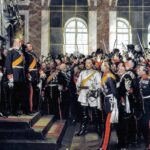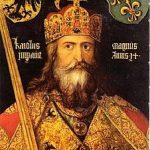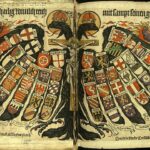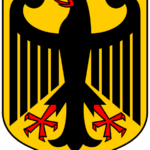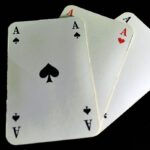Euro coins and banknotes came in circulation in 12 participating European countries on January 1, 2002
The banknotes and coins of the single currency of the European Monetary Union entered circulation on January 1, 2002. For the first time since the Roman empire, Europe shares a common legal tender. The launch of the euro, which has been an accounting currency since January 1, 1999, marks the largest monetary changeover in world history.
Euro notes and coins are quite colorful. The design for the seven banknotes gives each denomination a dominant color and unique size. Windows, gateways and bridges depict the architectural styles of Europe from Classical times to the 20th century. The small coins – .01, .02, .05 – are copper in color. The .10, .20, and .50 euro coins are composed of Nordic gold and are gold-toned. The 1 and 2 euro coins are two-toned, nickel and brass. They feature images of maps or globes and national symbols. Color is an important part of the design of each note. €5 is gray, €10 – red, €20 – blue, €50 – orange, €100 – green, €200 – yellow, €500 – purple.
Euro comes in the following denominations:
Banknotes: 5, 10, 20, 50, 100, 200 and 500
Coins: .01, .02, .05, .10, .20, .50, 1, and 2
As of January 1, 2001, the euro zone countries are Austria, Belgium, Finland, France, Germany, Greece, Ireland, Italy, Luxembourg, the Netherlands, Portugal and Spain. Each banknote and each coin, regardless of design, is valid in each country of the euro zone. The banknotes are identical across the euro zone. The coins feature images linked to national identities – Germany’s Brandenburg Gate on one version of the .10, .20 and .50 coins and Portugal’s royal seal of 1142 on another version, for example.
There is no time limit on exchanges and the old national currencies will never lose in exchange value. All bank branches will exchange marks for euros until February 28, 2002. After that, exchanges can only be made at branches of state banks, regardless of amount.
The euro symbol, €, was inspired by the Greek letter epsilon and is thereby a reference to Greece as the cradle of European civilization and to the first letter of the word Europe. The parallel lines represent the stability of the euro. The official abbreviation of euro is EUR. The plural of euro is euros. You can type the € symbol using your keyboard. Many keyboards used in Europe already have a euro key. In the U.S. only a tiny number are likely to have this feature. Later versions of Microsoft Word have keyboard combinations to create the € symbol. For U.S. keyboards press Alt + 5 or Alt + 0128 (on number pad at right on keyboard).

